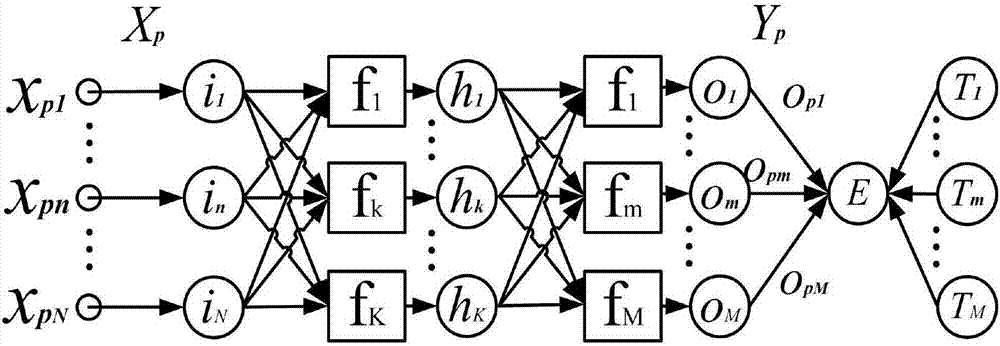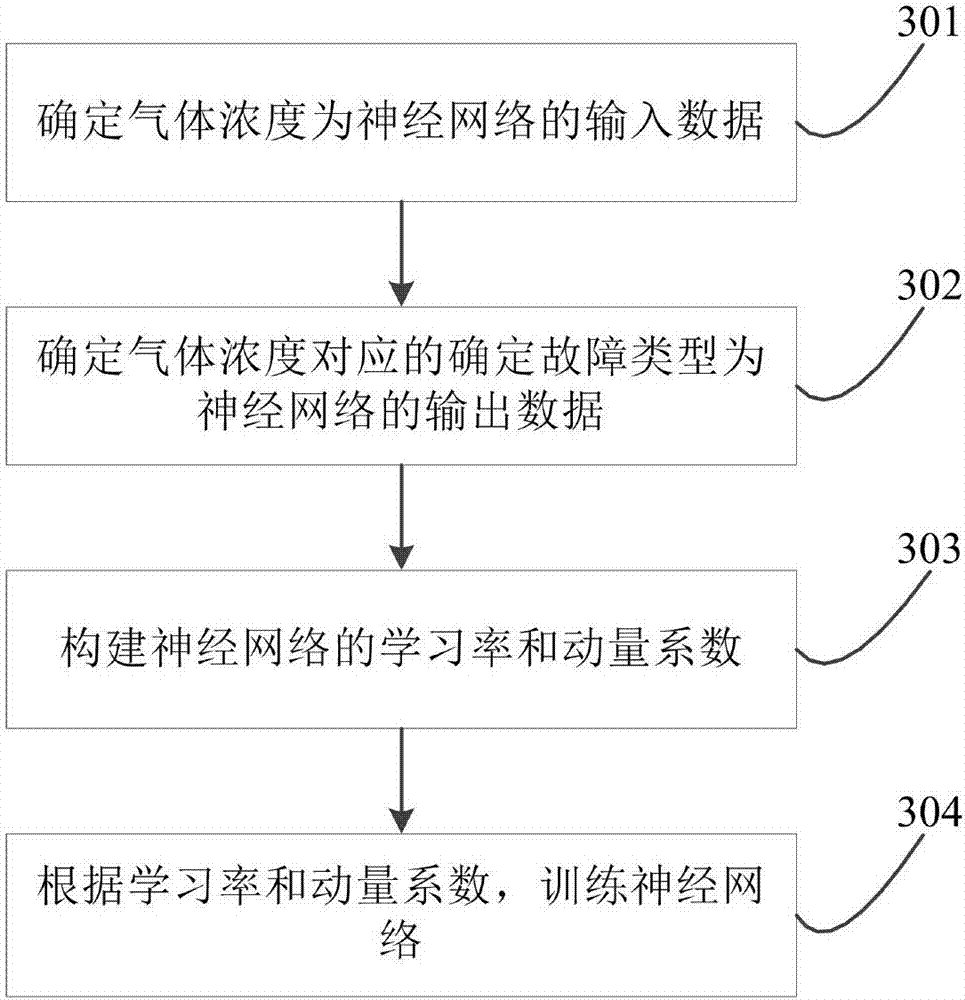Transformer fault diagnosis method and apparatus
A transformer fault and transformer technology, applied in the field of power system, can solve problems such as low accuracy of transformer fault diagnosis, and achieve the effects of improving fault diagnosis efficiency, improving the quality of distribution transformers, and improving accuracy
- Summary
- Abstract
- Description
- Claims
- Application Information
AI Technical Summary
Problems solved by technology
Method used
Image
Examples
Embodiment 2
[0044] This embodiment is based on the first embodiment and is a further improvement on the first embodiment. In the first embodiment, in the step of obtaining the dissolved gas concentration in the insulating oil of the transformer, the confirmed fault types of the transformer include high temperature overheating, medium and low temperature overheating, Arcing and partial discharge fault types; gas concentrations include: specific gas concentrations for hydrogen, methane, ethane, acetylene, and ethylene.
[0045] Common fault types of transformers are divided into external faults and internal faults. Internal faults cannot be concluded by observing the type of fault, and usually the phenomenon of internal faults can only occur when the transformer is in operation, so it is very important to detect faults in transformers that are not in the running state, and can also be applied to the quality of transformers before use. check. The types of internal faults include thermal fau...
Embodiment 3
[0049] image 3 It is an exemplary flowchart of the process of constructing and training a neural network in Embodiment 1 of the present application. This embodiment is based on the first embodiment and is a further improvement on the first embodiment. see image 3 As shown, in this embodiment, the neural network is constructed and trained, including:
[0050] Step 301, determine the gas concentration as the input data of the neural network.
[0051] A neural network needs to start training a neural network by building a neural network, inputting data, and outputting results. Since the neural network algorithm or the improved neural network algorithm is a general artificial intelligence algorithm, the construction of the neural network is not described in detail in the embodiment of the present invention. The gas concentration in the fault comparison table is used as input data.
[0052] Step 302, determine the determined fault type corresponding to the gas concentration ...
Embodiment 4
[0061] Figure 4 It is an exemplary flow chart of the process of training the neural network according to the learning rate and the momentum coefficient in the third embodiment of the present application. This embodiment is based on the third embodiment and is a further improvement on the third embodiment. see Figure 4 As shown, in this embodiment, according to the learning rate and the momentum coefficient, the neural network is trained, including:
[0062] Step 401, initialize weight and bias parameters.
[0063] Step 402, input the gas concentration into the input node of the neural network.
[0064] Step 403, calculate the output value of the hidden layer node according to the weight and bias parameters.
[0065] Step 404, calculating the error term of the hidden layer node according to the output value of the hidden layer node.
[0066] Step 405: Update the first weight value and the first bias parameter of the hidden layer node according to the hidden layer node er...
PUM
 Login to View More
Login to View More Abstract
Description
Claims
Application Information
 Login to View More
Login to View More - Generate Ideas
- Intellectual Property
- Life Sciences
- Materials
- Tech Scout
- Unparalleled Data Quality
- Higher Quality Content
- 60% Fewer Hallucinations
Browse by: Latest US Patents, China's latest patents, Technical Efficacy Thesaurus, Application Domain, Technology Topic, Popular Technical Reports.
© 2025 PatSnap. All rights reserved.Legal|Privacy policy|Modern Slavery Act Transparency Statement|Sitemap|About US| Contact US: help@patsnap.com



